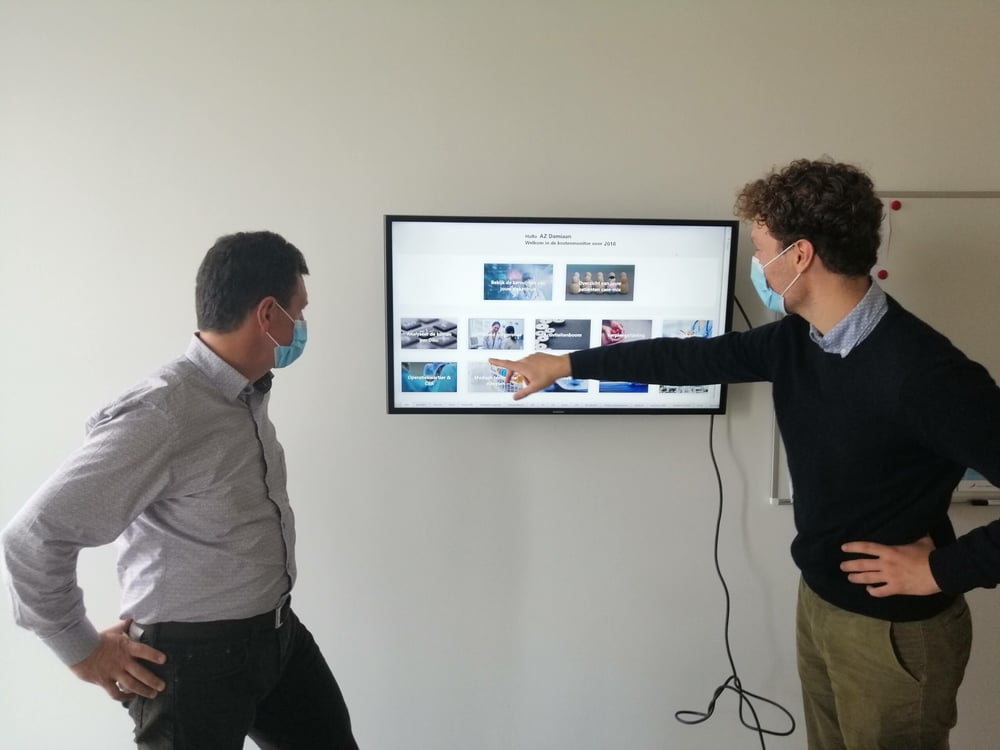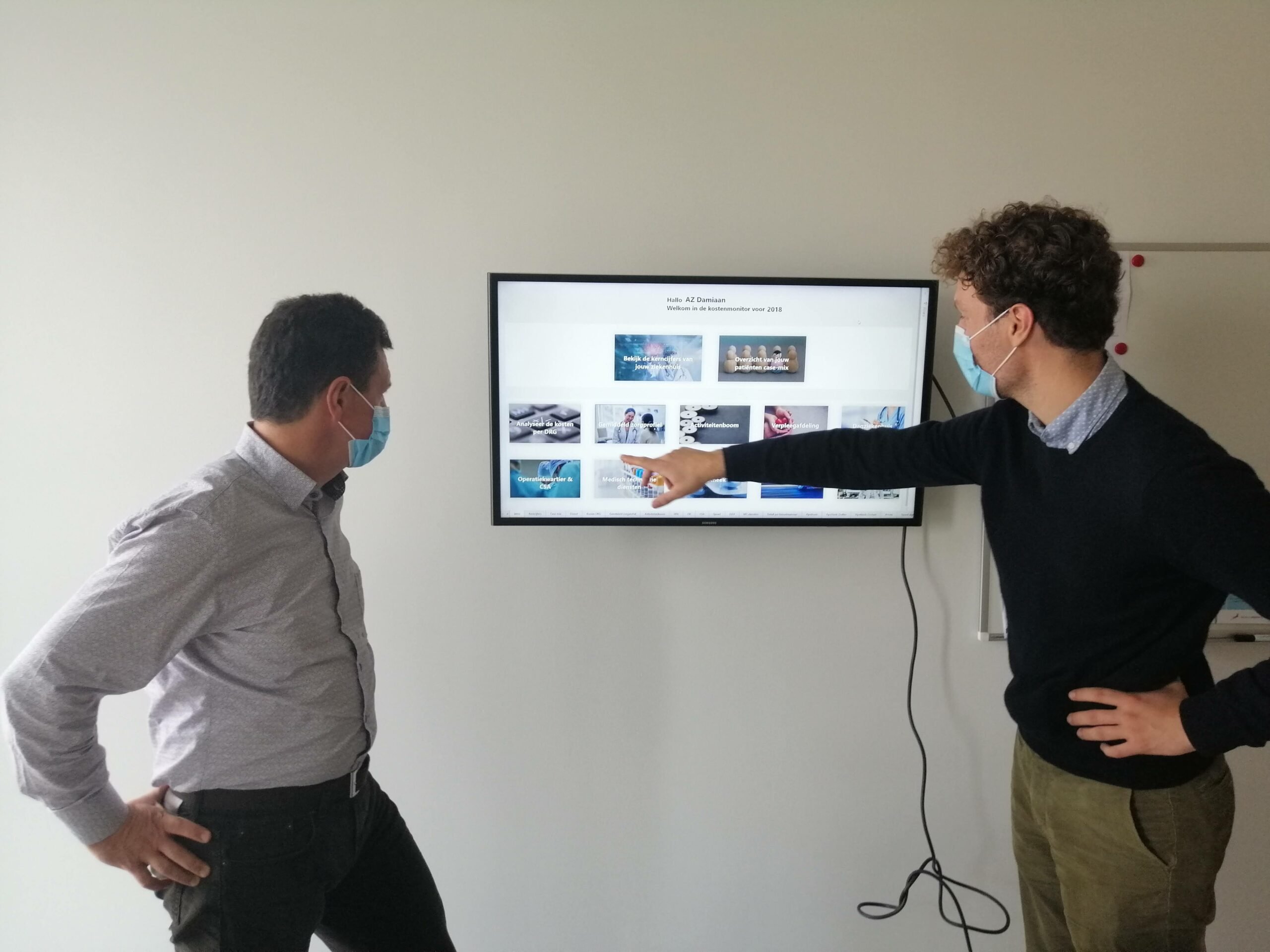Every hospital is under pressure to control costs. In addition, the government is announcing a shift from the current 'pay-as-you-go' system to a more flat-rate system. The introduction of low variability care was a first step in this direction. As a result, it is increasingly necessary for hospitals to have a clear view of the costs and revenues of each care pathway. Doctors, hospitals and the government also want to have a better idea of the quality of care provided. That is why Möbius decided, together with partner hospitals, to build the Value4Health dashboard that gives hospitals an overview of the care provided per disease, the associated costs, revenues and quality. Hospitals can also compare themselves with each other through a benchmark.
Stefan Van Neste, former CFO at AZ Damiaan, was the first to be enthusiastic about participating in the Value4Health dashboard project. That is why we asked him to tell us about the added value of this model for the hospital.

Stefan Van Neste and colleague Mathieu Dierick in front of the Value4Health dashboard model
Why did you decide to participate in the Value4Health dashboard project?
"In our case, the decision was made relatively quickly. We had already included in our four-year management plan that we wanted to have a better idea of the costs per condition. There was already talk at the time that the government would introduce more flat-rate financing. As it would then be very important to know what happens within that pathology and what a specific pathology costs, we wanted to know more. Even if care is moved within the networks, there is a need to better understand the impact on the cost structure. We therefore defined an action point in the management plan 4 years ago to gain this knowledge, ideally through a research project. The proposal made by Möbius fitted perfectly with the action point defined in the management plan.
Do you already drive the hospital on the basis of costs?
"We already do, yes, but at the level of the departments. In AZ Damiaan, for example, there are four geriatric departments. What you see is that there are big differences in the consumption of materials. Together with the nursing managers, we are trying to understand where these differences come from. Is it due to differences in pathology, use within the department, or other reasons? Together we are trying to agree on how to control costs. We want to go even further, but this will take time and resources.
There is also a 'Medical Devices Committee' where the different stakeholders explain their proposals for new products or equipment. In the meantime, everyone knows that for every project a business case has to be developed with an overview of the additional cost of the proposal and/or the savings that can be made. Thanks to this, we see that the budget for medical consumables does not increase further, while the business does."
What do you think is the added value of this project?
"The added value, in my opinion, is a more transparent view of one's own activities. We can compare specialities and departments. These figures are necessary to raise awareness in a targeted way. Benchmarking is also very interesting in my opinion. If you can compare 3-4 hospitals for a particular pathology, it provides a lot of information."
Do you see any challenges?
"I think the strength of the system is also the challenge. Because the Value4Health dashboard model is built from the bottom up based on hospital data, you can be sure you have the right cost drivers. This is strong. The downside is that you also have to manage a lot of data to be able to assess all the conditions correctly. It will be a challenge to invest in the right technology to do that."
How did you manage this project?
"As the project was in the management plan, it was easy to assign someone to it. Möbius was also very supportive: they put a lot of time into the project. The challenge now is to transfer the knowledge gained by Möbius to AZ Damiaan, so that we can start using the Value4Health dashboard model. We have already appointed internal people for this purpose. In addition, two new staff members in the general management will soon start focusing on the implementation of Value Based Healthcare (= Value Based Healthcare: getting an idea of costs and results and using them to improve care. nda). The timeframe for the project was 2 years. Since the arrival of Covid-19, this project has not always been a priority in recent times. Without the coronavirus, everything could have gone more smoothly."
What should the end result be for you?
"Möbius wants to include the revenues in the Value4Health dashboard model in 2021. For all parts of the BMF, distribution keys have been defined with the BMF experts of the partner hospitals. Revenues from billing and pharmacy are also included.)
"The problem is that the returns via the BMF are very often determined on a flat rate basis. This BMF is not always structured in a logical way and the revenues are not always linked to costs. If we compare the revenues per care pathway with the costs, we draw certain conclusions in terms of profitability per pathology. But this does not always mean that it is fair or correct. However, linking revenues to costs can help to identify certain issues in a transparent way. For example, you can give an overview of which components are over- and under-funded.
The CIO and the nursing record also contain a wealth of information. It would be good if the data from these systems could also be made available for building and supporting the model."
How do you see cost control in relation to the upcoming transitions?
"In the context of networking, this Value4Health dashboard model can very well be used to get an overview of one's own cost structure per pathology and to compare oneself with the hospitals in the network. It can also give an overview of the financial impact of transferring care within the network.
This model is also useful for future flat-rate financing. The larger the package, the more we will need this type of information. The flat rate approach will change the way of thinking in hospitals. At the moment we think at the level of the hospital or the department, but when lump sums become more widespread, you will look more at the level of the pathology.
The government wants to simplify funding. Pathology-based funding can lead to more equitable funding. The current BMF does not take sufficient account of medical trends, such as day hospital care. Under the BMF rules, for example, certain activities are only taken into account if they are carried out as part of a multi-day hospital stay. If this activity takes place in a day hospital, in some cases it does not count for funding. This is not an incentive for hospitals to transfer care to the day hospital, even though it is medically perfectly possible for certain conditions. Even with the introduction of low variability care, we see that the government still sticks to the old model: notwithstanding the flat rate reimbursement, doctors still have to register the nomenclature in low variability care. This creates a double administrative burden. The distribution of the lump sum for low variability care has been left by the government to the hospitals, which have to agree on this with the Medical Council. As the only available basis for the distribution of the lump sum seems to be the registered nomenclature, in most hospitals the lump sum is distributed in proportion to the value of the old nomenclature. This is not a major incentive to work in a cost-effective way.
The request to the government is therefore that - if the low-variability care system is extended - clear guidelines are given to the sector on the distribution of this lump sum between the hospital and the different care providers. If the government leaves the distribution to each hospital, it will take a lot of time and energy to establish an agreement between the care providers and the hospital. Time and energy that we would rather spend on the patient himself."




